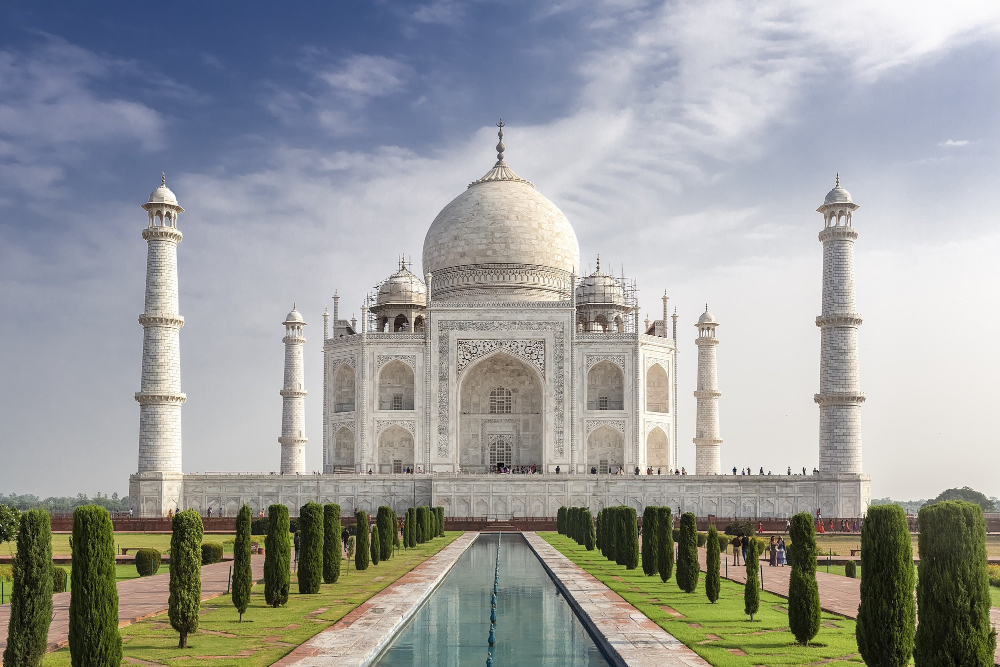12.31.24

The Taj Mahal Palace in Agra, India, stands as a testament to the enchanting beauty and rich cultural heritage of this ancient city. As one of the wonders of the world, the Taj Mahal captivates visitors with its awe-inspiring architecture and symbolic significance. This article explores the historical background and enduring allure of this magnificent structure, delving into its connection to love, architectural brilliance, and eternal beauty.
The Taj Mahal Palace in Agra, India, is a captivating architectural marvel that has captured the imagination of visitors from around the world. Its enchanting beauty lies not only in its grandeur but also in the intricate details that adorn its walls and domes. The palace stands as a testament to the skill and craftsmanship of the artisans who created it. As one explores its magnificent corridors and gardens, a sense of awe and wonder permeates the air. The Taj Mahal Palace is a true wonder of the world, a place that transports you to a different era, where beauty and artistry intertwine to create an unforgettable experience.
Agra, a city in northern India, is steeped in history and rich cultural heritage. Located on the banks of the Yamuna River, Agra is renowned for its architectural marvels and historical significance. The city served as the capital of the Mughal Empire during the 16th and 17th centuries, leaving behind a legacy of magnificent structures. One of the most iconic landmarks in Agra is the Taj Mahal Palace, a wonder of the world and an epitome of love and architectural brilliance. Agra also boasts other notable attractions such as Agra Fort and Fatehpur Sikri, both showcasing the grandeur and opulence of Mughal architecture. With its captivating history and cultural heritage, Agra continues to attract visitors from around the globe, offering a glimpse into India's glorious past.
The Taj Mahal, located in Agra, India, is not only a marvel of architectural brilliance but also holds profound symbolic significance. Constructed by the Emperor Shah Jahan as a burial place for his adored spouse Mumtaz Mahal, it remains an enduring symbol of their affection and dedication. The Taj Mahal's grandeur and exquisite craftsmanship reflect the emperor's desire to create a monument that would forever encapsulate the beauty of their relationship. Its symmetrical design and intricate details showcase the mastery of Mughal architecture, with its delicate marble inlays and intricate carvings. As a wonder of the world, the Taj Mahal continues to captivate visitors with its timeless elegance, reminding us of the power of love, the magnificence of architectural achievements, and the eternal beauty that transcends time.
As we conclude our journey through the enchanting beauty of the Taj Mahal Palace in Agra, we are left in awe of its symbolic significance and architectural grandeur. This wonder of the world stands as a testament to love, eternal beauty, and the rich cultural heritage of India. But beyond its physical magnificence lies a deeper question: What other hidden wonders are waiting to be discovered in this ancient city?
Archive India